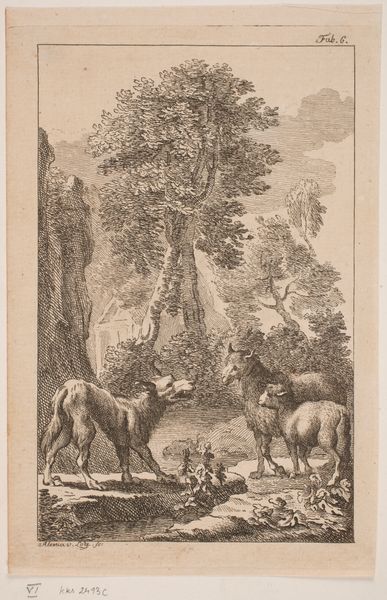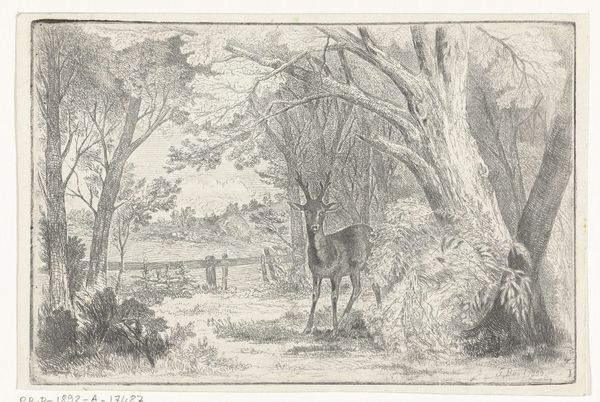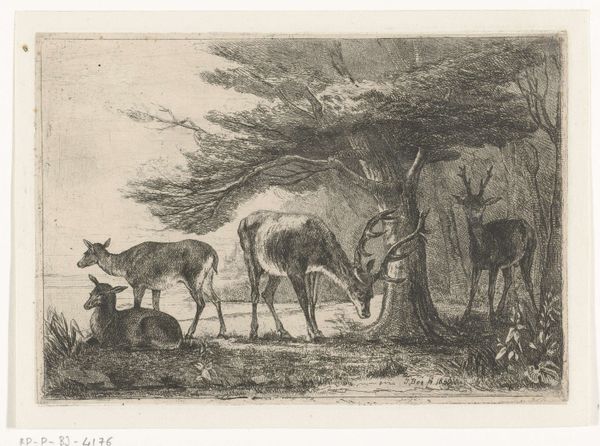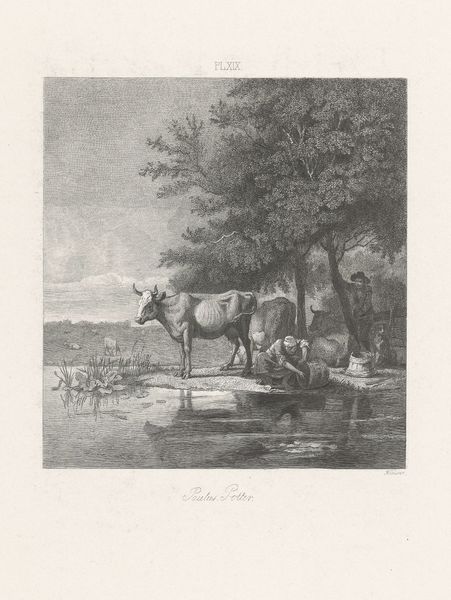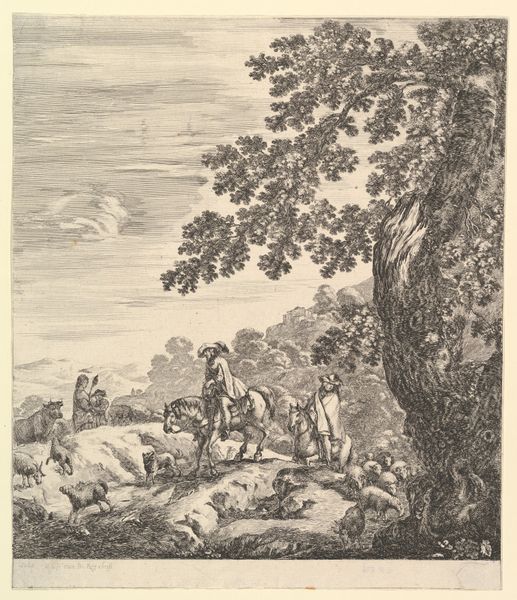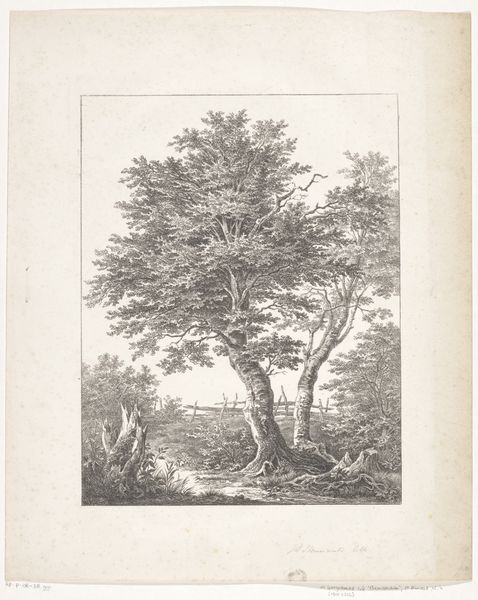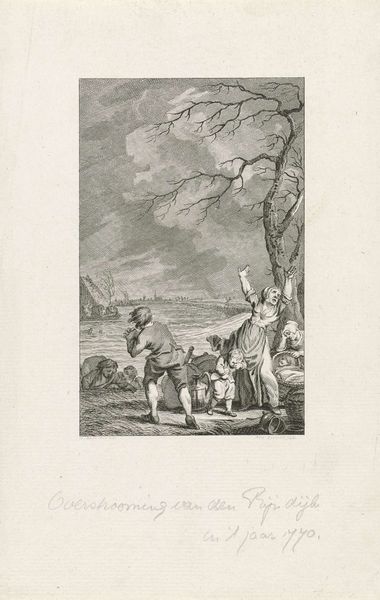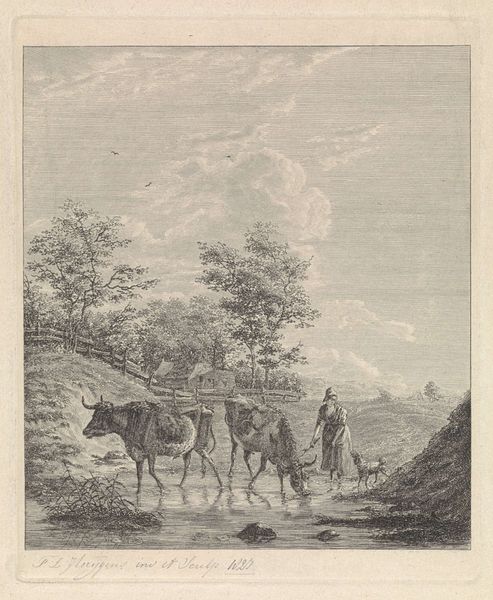
Dimensions: height 273 mm, width 188 mm
Copyright: Rijks Museum: Open Domain
Editor: This is "Goats and a Milkmaid" by Pieter Franciscus Martenasie, made sometime between 1739 and 1789. It's an engraving. I'm struck by the sort of casual interaction shown here, with goats just being goats around this woman doing her work. What jumps out at you? Curator: It’s fascinating how this seemingly simple pastoral scene is steeped in cultural memory. Note the goat rearing on its hind legs, reaching for the leaves. Consider the goat as a symbol. Often associated with virility and stubbornness, its presence here invites a psychological reading of primal urges and untamed nature, doesn’t it? Do you see any other instances where animals' natures could influence the cultural memory that you mentioned? Editor: Well, the little goat lying down could represent domesticity or tameness, being so close to the milkmaid and all. Is there significance to showing the animals and the milkmaid in the same image? Curator: Exactly. The milkmaid represents the ideal of rural simplicity. The pairing creates a dialogue: nature, both wild and tamed, coexisting with human industry. It speaks to the human desire to find harmony with nature, perhaps a yearning for a lost Arcadia, rendered accessible through familiar and potent visual shorthand. Notice the details— the tree, the mountains in the distance—they create an emotional landscape as much as a physical one. Do they remind you of other imagery, maybe paintings? Editor: It reminds me a bit of the Hudson River School painters, but they came much later. It’s interesting how a simple image can carry so many layers. I had no idea. Curator: Indeed. Visual symbols are never simple, are they?
Comments
No comments
Be the first to comment and join the conversation on the ultimate creative platform.

